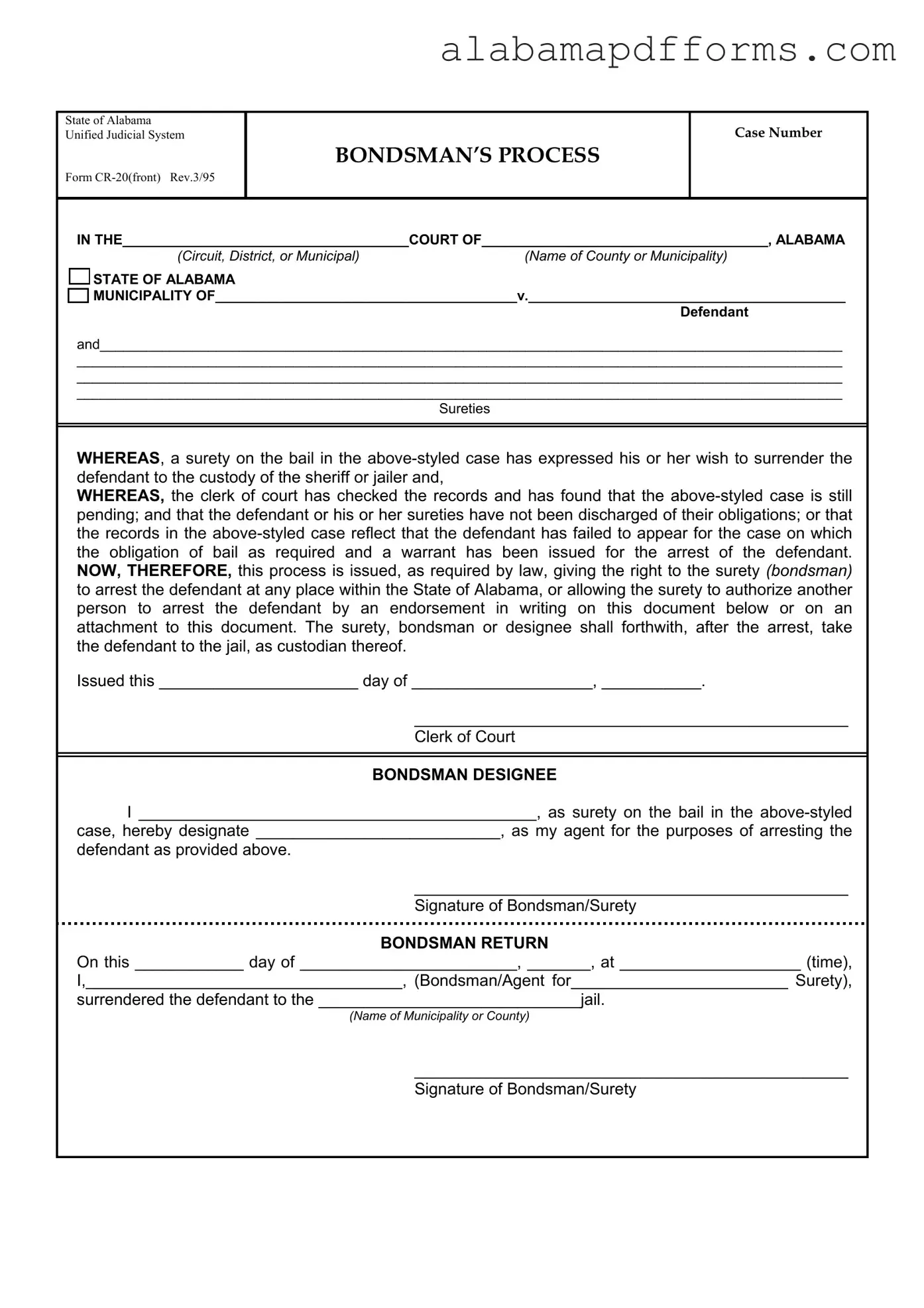IN THE_____________________________________COURT OF_____________________________________, ALABAMA
(Circuit, District, or Municipal)(Name of County or Municipality)

 STATE OF ALABAMA
STATE OF ALABAMA
MUNICIPALITY OF_______________________________________v._________________________________________
Defendant
and________________________________________________________________________________________________
___________________________________________________________________________________________________
___________________________________________________________________________________________________
___________________________________________________________________________________________________
Sureties
WHEREAS, a surety on the bail in the above-styled case has expressed his or her wish to surrender the defendant to the custody of the sheriff or jailer and,
WHEREAS, the clerk of court has checked the records and has found that the above-styled case is still pending; and that the defendant or his or her sureties have not been discharged of their obligations; or that the records in the above-styled case reflect that the defendant has failed to appear for the case on which the obligation of bail as required and a warrant has been issued for the arrest of the defendant. NOW, THEREFORE, this process is issued, as required by law, giving the right to the surety (bondsman) to arrest the defendant at any place within the State of Alabama, or allowing the surety to authorize another person to arrest the defendant by an endorsement in writing on this document below or on an attachment to this document. The surety, bondsman or designee shall forthwith, after the arrest, take the defendant to the jail, as custodian thereof.
Issued this ______________________ day of ____________________, ___________.
________________________________________________
Clerk of Court
BONDSMAN DESIGNEE
I ____________________________________________, as surety on the bail in the above-styled
case, hereby designate ___________________________, as my agent for the purposes of arresting the
defendant as provided above.
________________________________________________
Signature of Bondsman/Surety
BONDSMAN RETURN
On this ____________ day of ________________________, _______, at ____________________ (time),
I,___________________________________, (Bondsman/Agent for________________________ Surety),
surrendered the defendant to the _____________________________jail.
(Name of Municipality or County)
________________________________________________
Signature of Bondsman/Surety



 STATE OF ALABAMA
STATE OF ALABAMA